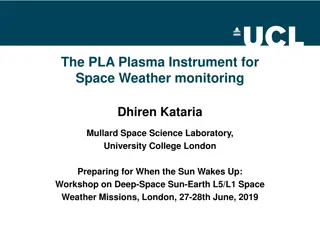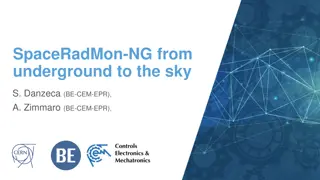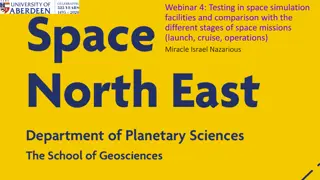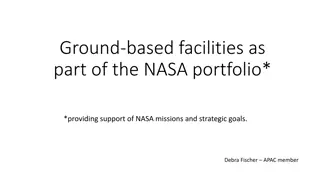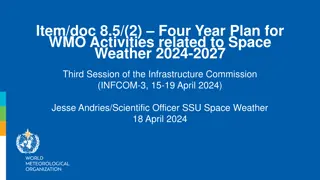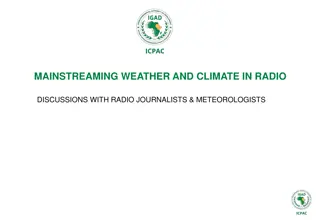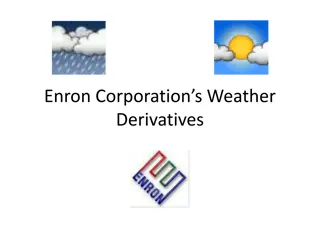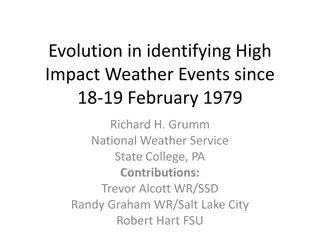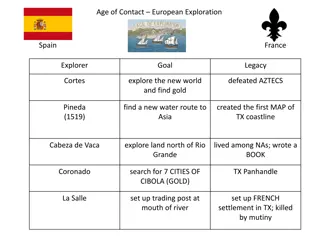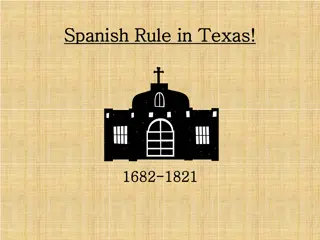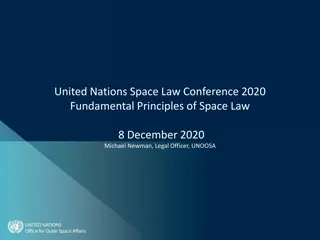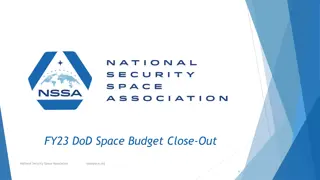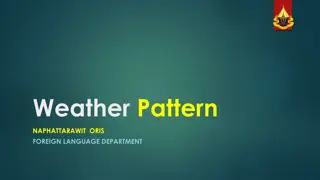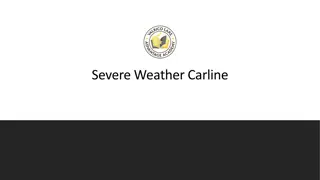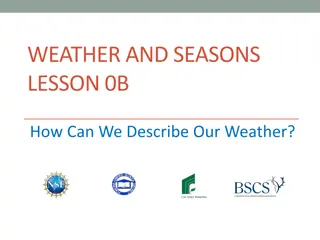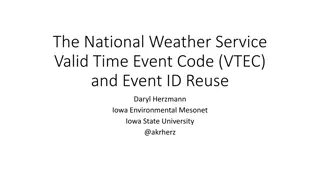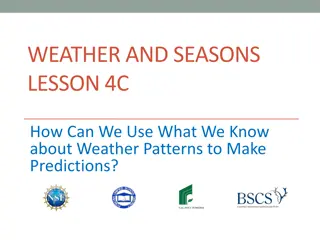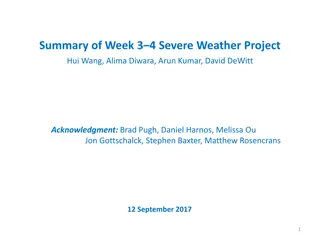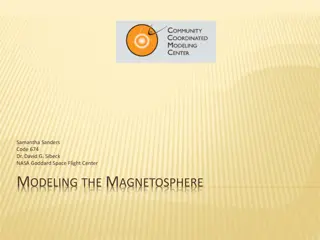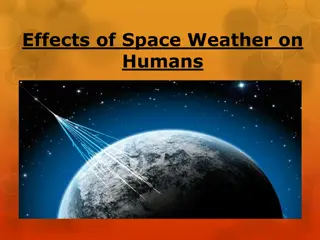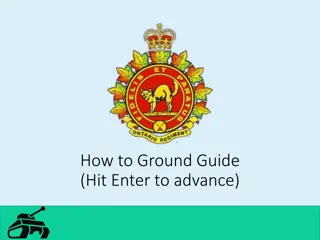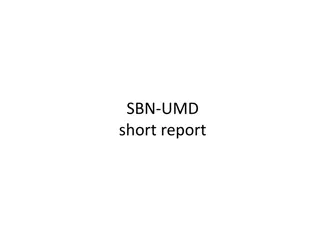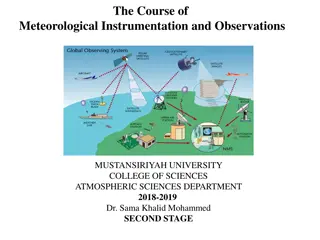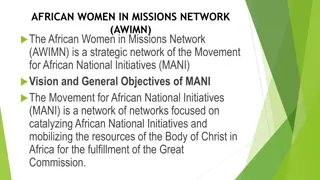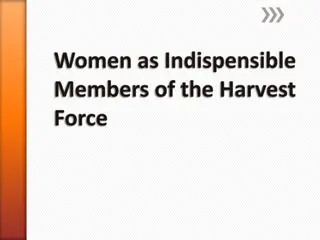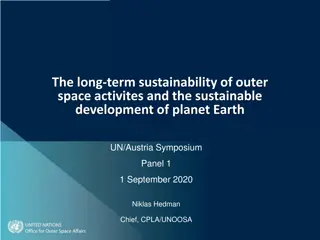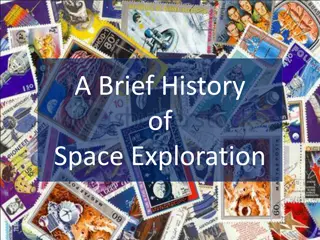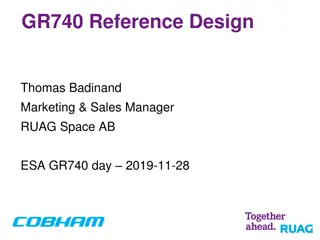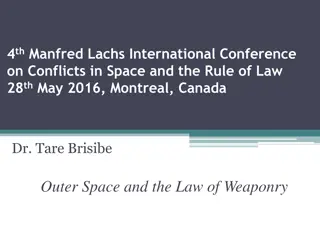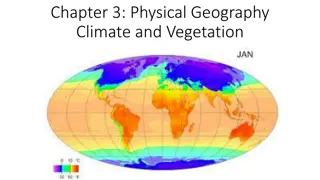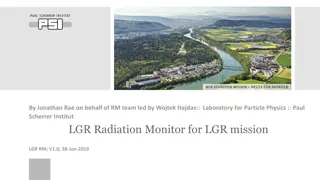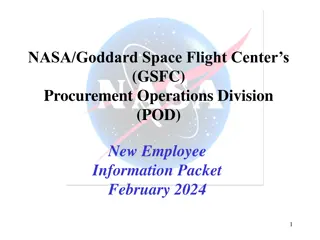Ground Support to Space Weather Missions Overview
This discussion covers ground support for space weather missions, focusing on existing RTSW and Beacon networks such as ACE and DSCOVR. The Real-Time Solar Wind Network, established in 1998, facilitates real-time solar wind data transmission, with partners including NOAA, DLR, and KSWC. The network's main limitation is its Northern Hemisphere coverage. Tracking facilities for DSCOVR and ACE involve international collaborations with institutions like NOAA, KSWC, and NASA, ensuring comprehensive monitoring of space weather conditions.
Download Presentation

Please find below an Image/Link to download the presentation.
The content on the website is provided AS IS for your information and personal use only. It may not be sold, licensed, or shared on other websites without obtaining consent from the author. Download presentation by click this link. If you encounter any issues during the download, it is possible that the publisher has removed the file from their server.
E N D
Presentation Transcript
WG4: Ground support to space-weather missions D.A. Biesecker (NOAA/SWPC) and KiChang Yoon (KSWC)
Overview Ground data processing will be covered in the next talk ESA ground station network in the subsequent talk I m only addressing what is used for existing RTSW or Beacon networks Begin with a review of existing operational (i.e. 24x7 networks) ACE/DSCOVR - RTSW STEREO What is promised for the future What is proposed for the future
Real-Time Solar Wind Network Real-Time Solar Wind (RTSW) given that name by Zwickl et al. (1998) Began in 1998 for the purpose of providing ACE data in real-time ACE began the era of space weather beacons RTSW now is used to reference any real-time, continuous solar wind data stream Original partners were ISRO (India); RAL (UK); NICT (Japan); and NOAA (Boulder) ISRO dropped out very early on RAL replaced by Germany (DLR) in 2009 Korea (KSWC) added in 2012 Main issue with RTSW is it is a northern hemisphere network.
RTSWnet/NOAA RTSWnet NOAA FCDAS (21m) DLR (6m) BLDR (6m) NICT (11m) WCDAS (18m) KSWC (13m)
L1 Tracking ACE DSCOVR S-band (2215 MHz) 20 kbps (138 kbps high rate) Range ~1.5E6 km Convolutional coding Rate = Reed-Solomon Error Correction S-band (2278 MHz) 434 bps Range ~1.5E6 km Convolutional coding Rate=1/2 Reed-Solomon Error Correction Dishes of 6m have plenty of margin In fact, Boulder s 6m dish regularly receives the 138 kbps high rate Dishes as small as 3m have been used
Current DSCOVR Tracking Asia National Institute of Information and Communications Technology (JAPAN) Korean Space Weather Center Europe German Aerospace Center Americas NOAA Wallops Island VA NOAA Boulder, CO NOAA Fairbanks, AK Johns Hopkins University Applied Physics Laboratory (as needed) US Air Force provides tracking as needed.
Current ACE tracking DLR (German Aerospace) Kiel (a STEREO tracking partner) NOAA Wallops NASA DSN And all DSCOVR stations can track ACE if needed
STEREO Tracking X-band (8443 MHz) 633 bps Range ~1.3E8 km Turbo* encoding Rate=1/6 Reed-Solomon Error Correction * Turbo was patented by France Telecom. Patents have expired. That means I deal with few lawyers than I used to.
Current STEREO Tracking Asia National Institute of Information and Communications Technology (JAPAN) Korean Space Weather Center Europe AMSAT-DL (Bochum, Germany) Centre National d Etudes Spatiale (Toulouse, France) DL0SHF (Kiel-Roenne, Germany) Americas Johns Hopkins University Applied Physics Laboratory (as needed)
STEREO Tracking Sites (Turbo) Dedicated station As available BOCHUM (20m) NICT (11m) KIEL (9m) CNES (9m) JHU/APL (18m) KSWC (13m)
Other relevant sites 25m dish in Raisting, Germany Student run NOAA funded SBIR to look at ground networks for future space weather needs (L1, L5) Phase II of SBIR will investigate existing commercial station availability, capabilities, and costs.
Promised for L5 Well, ESA and UK Space will have to answer that question KSWC, as they did for ACE and STEREO, stands ready to build an antenna that meets requirements
Possible for L5 Depending on the real-time data volume, lots Borrow from STEREO? NOAA? Use SWAP 6.2.4 Letter from Volz (NESDIS AA) to Rolf Densing (ESA) Potential partnership
SWAP Report Recommendations Upgrades at Boulder A new antenna to provide year-round coverage, even at higher bit rates. For long term considerations, we suggest this be something that could handle downlinks from spacecraft at L1 or L5. Preliminary estimates are that a dish of up to 15m might be required for L5. SWPC received a quote for a 13m dish in 2014 for $1.01M Two antennas would provide necessary redundancy Upgrades at WCDAS An additional antenna capable of uplink and downlink that can handle L1 and at least downlink of data from an L5 mission. This would enable redundancy within WCDAS as well as provide potential support to an international L5 mission. Upgrades at FCDAS A new antenna capable of uplink and downlink that can handle L1 and at least downlink of data from an L5 mission. This would ensure that should WCDAS go down, both GOES and the L1 mission could be tracked from FCDAS.


